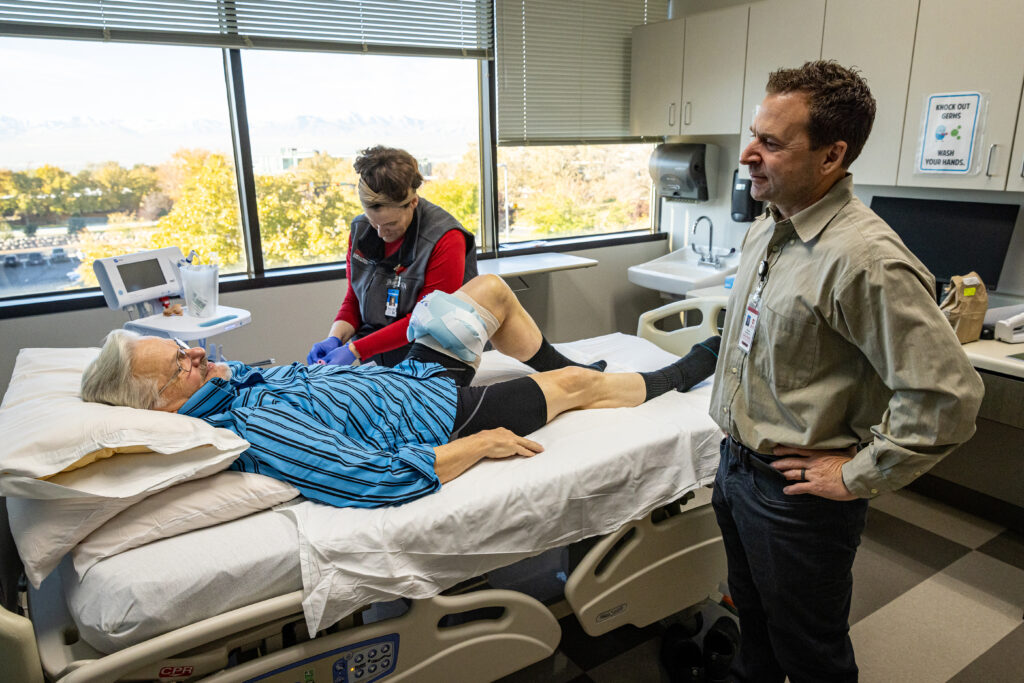
As we get older, it can be harder to bounce back from injury or prolonged periods of bed rest. That’s partly because it takes older adults longer to rebuild muscles that have atrophied due to disuse. The resulting weakness can limit mobility and put people at risk for falls, hospitalization, and even chronic disease. Encouragingly, it may be possible to protect older adults against muscle loss with a drug that millions of people already take.
That drug, metformin, helps to control blood sugar and is commonly used to treat diabetes. But it also changes the behavior of cells that can influence muscle regeneration and growth. When professor of physical therapy and athletic training Micah Drummond, PhD, and colleagues gave metformin to people over the age of 60 before and during a five-day period of bed rest, those individuals experienced less muscle atrophy than people who spent the same five days in bed, but took only a placebo. Participants’ muscles also had less fibrosis—a hardening of the tissue that can interfere with function—if they took metformin. Drummond and his colleagues think that’s because metformin limits senescence, a state in which cells tend to secrete factors that promote inflammation. He and his team are excited about the prospect of deploying metformin, a drug that is considered inexpensive and safe, to get people back on their feet faster.
References:

Disuse-induced muscle fibrosis, cellular senescence, and senescence-associated secretory phenotype in older adults are alleviated during re-ambulation with metformin pre-treatment. Petrocelli JJ, McKenzie AI, de Hart NMMP, Reidy PT, Mahmassani ZS, Keeble AR, Kaput KL, Wahl MP, Rondina MT, Marcus RL, Welt CK, Holland WL, Funai K, Fry CS, Drummond MJ. Aging Cell. 2023 Nov;22(11):e13936.
Press Releases and Media:

University of Utah Health: “A Common Diabetes Drug Has a Surprising Side Gig: Muscle Protector”

